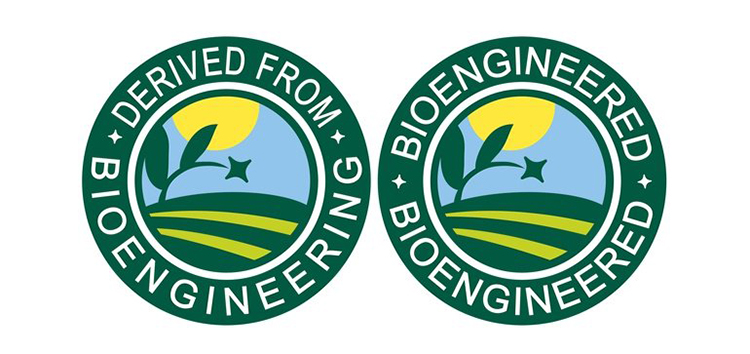
Did that product come from a genetically modified organism (GMO)? From a consumer perspective, there isn’t always a clear answer.
Beginning January 1, 2020, though, genetically modified, or bioengineered, foods in the grocery store will likely become easier to identify thanks to the “National Bioengineered Food Disclosure Standard” brought forward by USDA’s Agricultural Marketing Service (AMS). The standard requires disclosure, including use of the label seen above, on foods that are testable as containing genetically engineered ingredients. This January marks just the start of this GMO food labeling project . . . as there is a two-year phase-in to the standard.
More importantly, however, is the fact that the use of this label should make it clearer to consumers what foods are not genetically engineered.
Better understanding of our food system
Currently, AMS lists only 13 crops whose bioengineered varieties may be sold and produced in the United States:
- Alfalfa
- Apples (Arctic varieties)
- Canola
- Corn
- Cotton
- Eggplant (BARI Bt Begun varieties)
- Papaya (ringspot virus-resistant varieties)
- Pineapple (pink flesh varieties)
- Potato
- Salmon (AquAdvantage varieties)
- Soybean
- Summer squash
- Sugarbeet
However, the prevalence of non-GMO labels on other food products, often times ones that have no genetically modified varieties, easily muddies the waters for food buyers who are less than familiar with genetically modified crop production. Food companies pay the Non-GMO Project’s third-party evaluators for each product they want to have analyzed, verified, and labeled with the Non-GMO Project Verified image. Manufacturers often use that stamp of approval as a tactic to ease consumer fear about the foods available for them to buy.
The Non-GMO Project touts that they have over 50,000 verified products for more than 3,000 brands. The label can be found on fruits and vegetables from carrots to cranberries, plus products like vanilla extract and salt. Some yogurts, cheeses, and milks even carry the label on their packaging. These are all products in which no bioengineering has been developed, so of course, all items are not genetically engineered. It quickly gets tricky, though, if a product isn’t “verified” to be non-GMO.
Consumer confusion
Does an unlabeled product truly contain genetically modified ingredients, or has the parent company simply not paid for the food to go through the labeling process? There is no way for shoppers to differentiate.
The AMS’s new standard intends to “provide a mandatory uniform national standard for disclosure of information to consumers about the (bioengineered) status of foods.” January 1, 2020, initiates the first phase of the label’s implementation plan.
Mandatory compliance must be achieved by January 1, 2022. By this date, if the package doesn’t have the label, the food does not contain bioengineered ingredients.
This is not to say that the Non-GMO Project Verified labeling will disappear. The group is confident their requirements exceed those of the standard, and AMS has said the rule is designed to minimize the impact on voluntary verification programs.
This new standard still appears to have potential to clear up fearful food labeling, but to be truly effective, consumers will have to become familiar with it. This means explaining and publicizing the value of the label, which will be managed and regulated by USDA’s AMS. The “Verified” labeling will continue to be controlled by the Non-GMO Project. Recognizing and understanding the difference and truthfulness between the two will be vital for Americans to more accurately evaluate their food choices.








